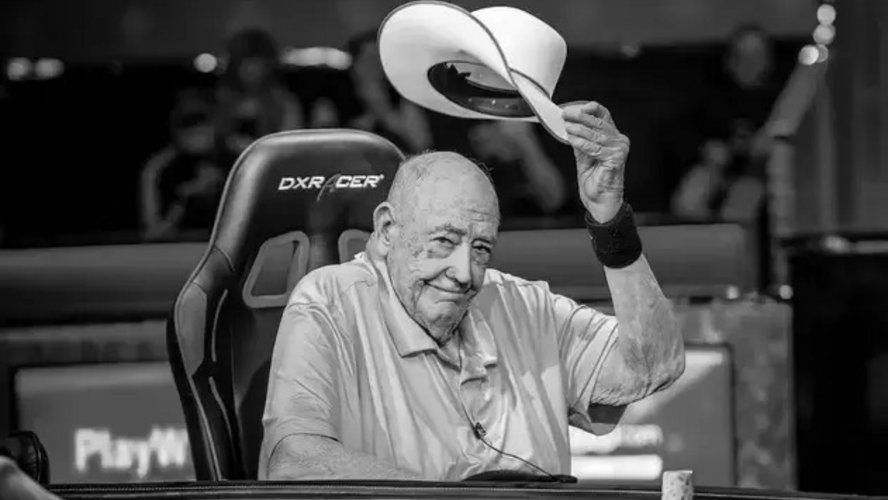We admire poker legends not just for their dazzling skills or their uncanny ability to read opponents like an open book. What truly sets them apart is their charisma, their extraordinary life stories, and the unmistakable mark they have left on the very culture of the game. Each one of these personalities brought something unique to the table. Some made history with their victories, others with their unmatched style or relentless attitude. Which players truly shaped the eras of poker and left behind legacies that won’t soon be forgotten?
Pioneers of Poker: Where the Legend Began
Every game has its founders, and poker is no exception. One of the game’s very first legends was Wild Bill Hickok, a true icon of the American Wild West. Hickok made his name not only through his gunslinging exploits, but also for his passion for poker. He achieved immortality thanks in part to the myth of the “Dead Man’s Hand” —two aces and two eights — the hand he was reportedly holding when he was shot from behind while playing at a Deadwood saloon in 1876. Whether fact or fable, it’s a story that gave poker a romantic edge of danger and daring.
Decades later, poker left the smoky saloons behind for the green felt tables of the casino, launching a new era of professionals. Among the most prominent figures was Johnny Moss, who became the very first official champion of the World Series of Poker in 1970, an honor voted on by his own competitors. With three Main Event titles and a near-mythical reputation from his years at the cash game tables, Moss became known as the "Grand Old Man of Poker." According to legend, Moss once played a days-long heads-up showdown against Nick “The Greek” Dandolos, an epic duel that’s widely considered the origin of the WSOP itself. Sometimes all it takes is one legendary match to change history forever.
WSOP's Golden Age: Geniuses, Gamblers, and Unforgettable Characters
The modern era of tournament poker truly took off in the 1970s, bringing into the spotlight a new wave of players who would change the game forever. Their records at the table were legendary, but what truly made these players immortal was their combination of raw talent, undeniable personality, and one-of-a-kind life stories.
Doyle Brunson, universally known as the "Godfather of Poker," is one of the most respected figures this game has ever known. Brunson’s approach was fearless, aggressive, and uncompromising — exactly the kind of poker that shaped the game into a true mind sport. His back-to-back wins at the WSOP Main Event in 1976 and 1977 were both sealed with the same unlikely hand, 10♠-2♠, a combo most others wouldn’t even play. The “Doyle Brunson hand” became an instant classic. But his greatest contribution may have been his book, Super/System, which pulled back the curtain on advanced poker strategy and revealed secrets pros had guarded for decades. Many top players still call it the “poker bible,” and say Brunson’s willingness to share his knowledge accelerated the game’s evolution by years.

Stu Ungar, known as "The Kid," was Brunson’s polar opposite, a young prodigy with raw, untamed genius and a deeply tragic life. By his teens, Ungar was already a dominant force in gin rummy, so much so that no one wanted to play him. He shifted to poker and instantly made his mark, capturing back-to-back WSOP Main Event titles in 1980 and 1981 at just 26 years old. Ungar’s ability to read his opponents bordered on supernatural. After years of personal struggle and addiction, he made an extraordinary comeback in 1997, winning his third Main Event. But just a year later, he was found dead in a cheap motel, broke and alone. Brilliant and broken, Ungar’s story still serves as both warning and inspiration.
Then there was Amarillo Slim, real name Thomas Preston, a true showman, always ready with a wild prop bet, a cowboy hat, and a story to impress. Winner of the 1972 WSOP, Slim didn’t just capture the public’s imagination with his play at the tables, he turned poker into an outright spectacle. His famous wagers, like beating a tennis champion using a frying pan instead of a racket (which he actually did), earned him a spot on The Tonight Show in front of millions. Slim went on to found the Super Bowl of Poker, the second-biggest tournament circuit of its era. At a time when poker was still hiding in the casino’s back rooms, Slim turned it into a pop culture sensation.
This trio defined the Golden Age of the WSOP — each in their own way. Doyle was the mentor and strategist, Stu the tragic genius, and Slim the showman. Together, they shaped poker’s image as a game that is so much more than simple gambling — it’s a contest of personalities, intellect, and passion.
Closing Thoughts: The Legends Are Just Getting Started
The poker world is filled with extraordinary characters, from the gunslingers of the Wild West saloons to the iconic champions of the WSOP’s golden age. In this opening segment of our series, we’ve revisited the pioneers who laid the foundation for the modern game, as well as the players who not only claimed victory but pushed poker forward through their genius, charisma, or boldness. But the greatest tales are still to come.
In the next installments, we’ll spotlight the modern poker superstars who mastered the online game, take a closer look at controversial figures who divided the community, and meet those who have become the faces of the game’s newest era. Get ready for stories that will inspire, shock, and entertain, and see why poker legends are much more than just tournament winners. Stay tuned. The game is far from over.




